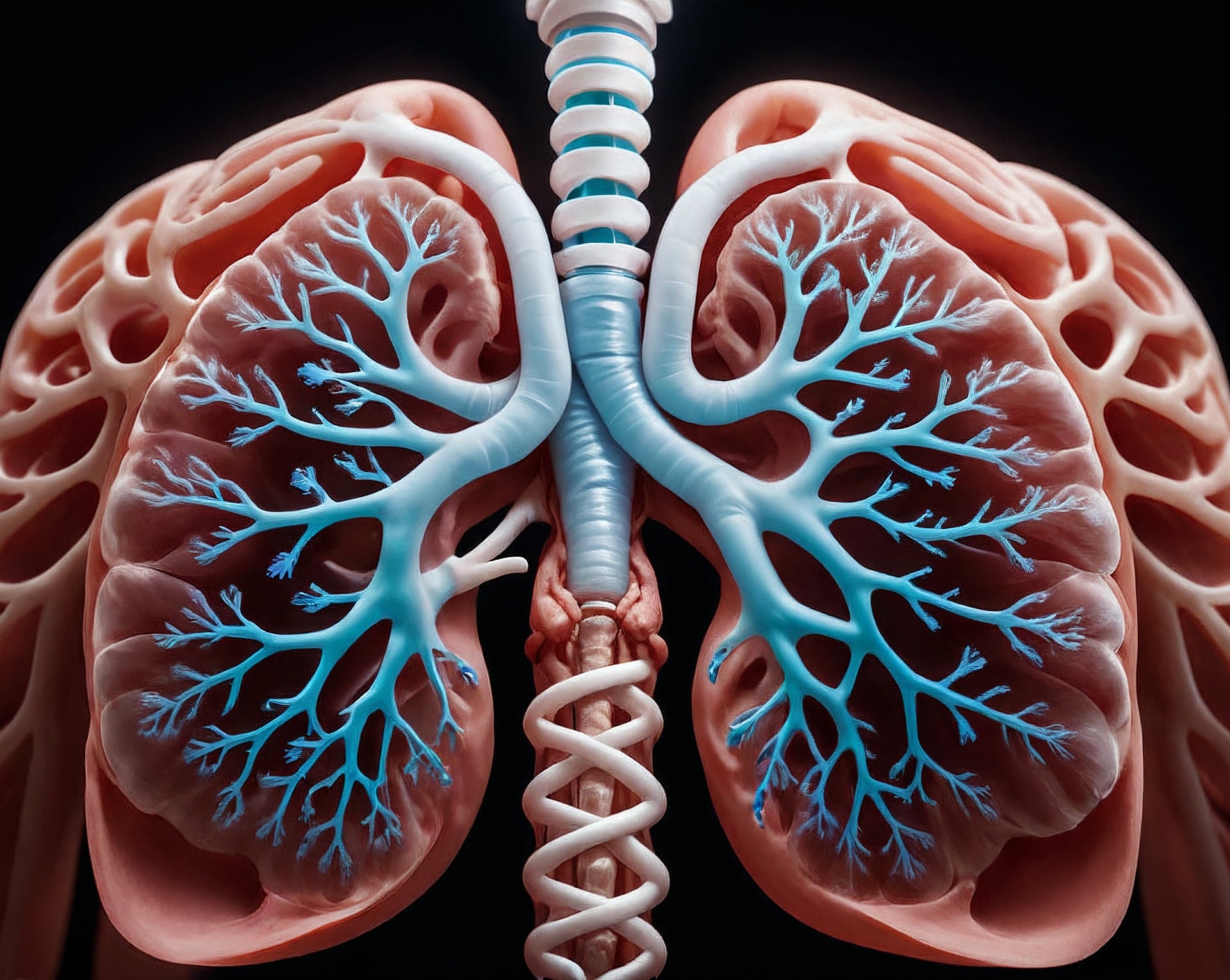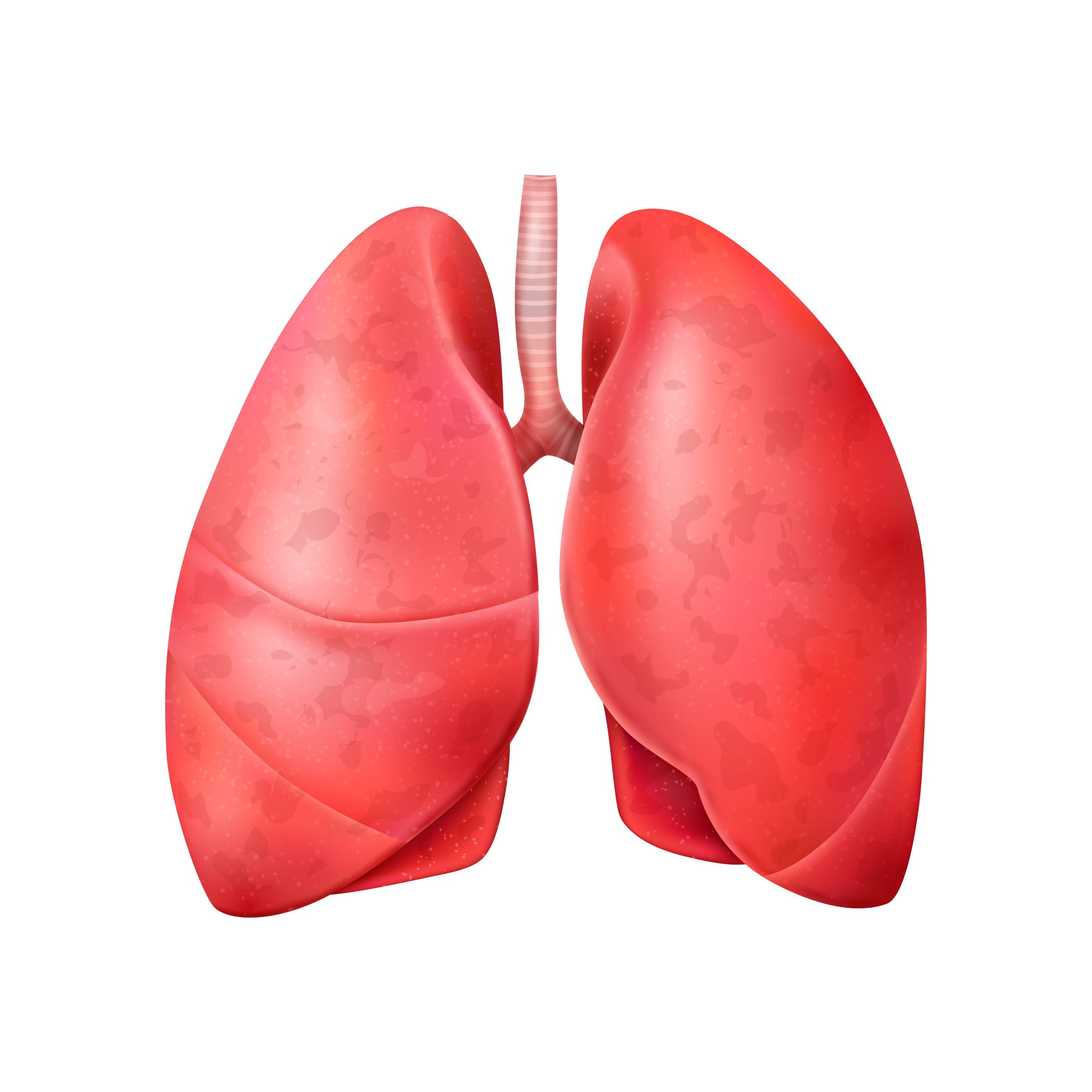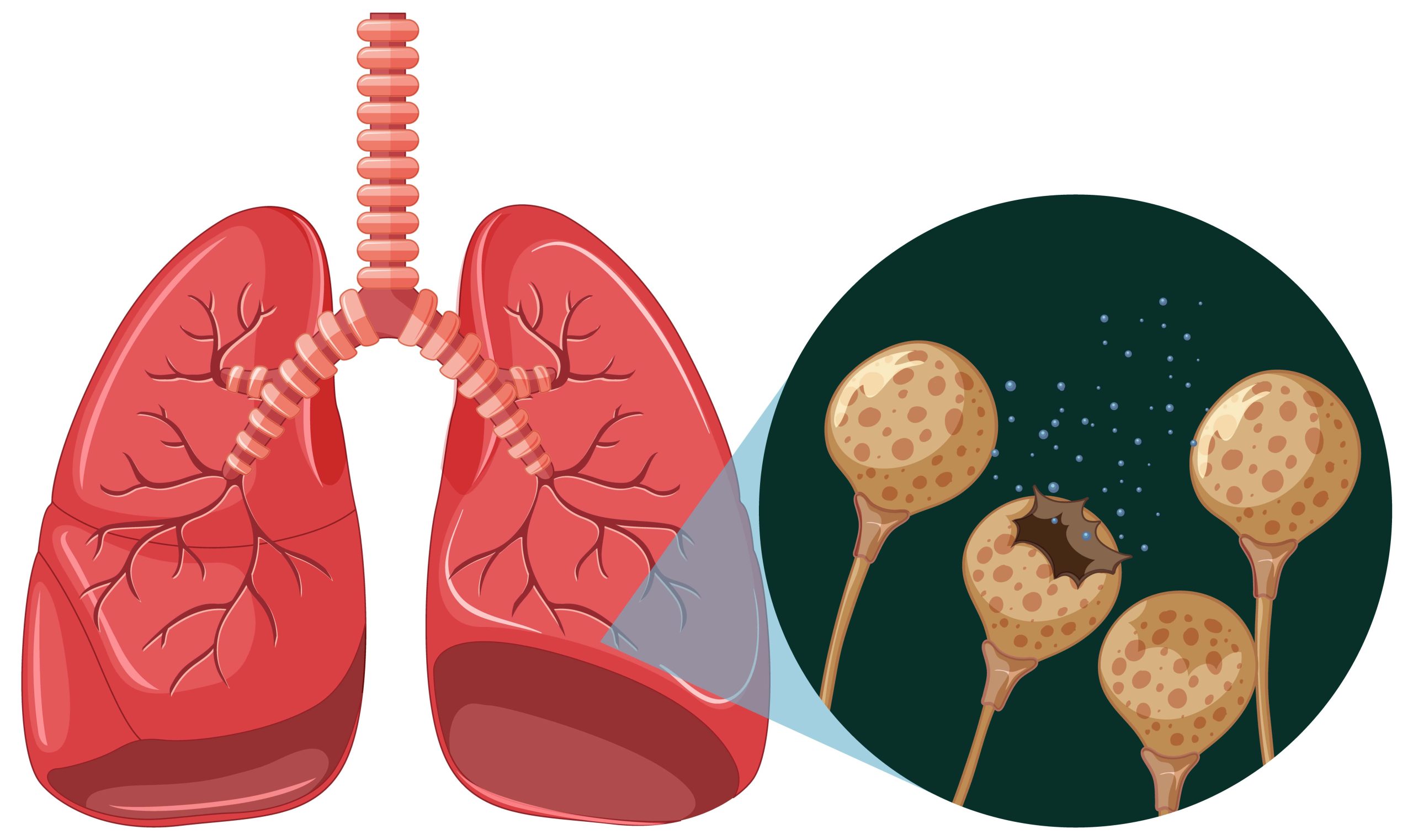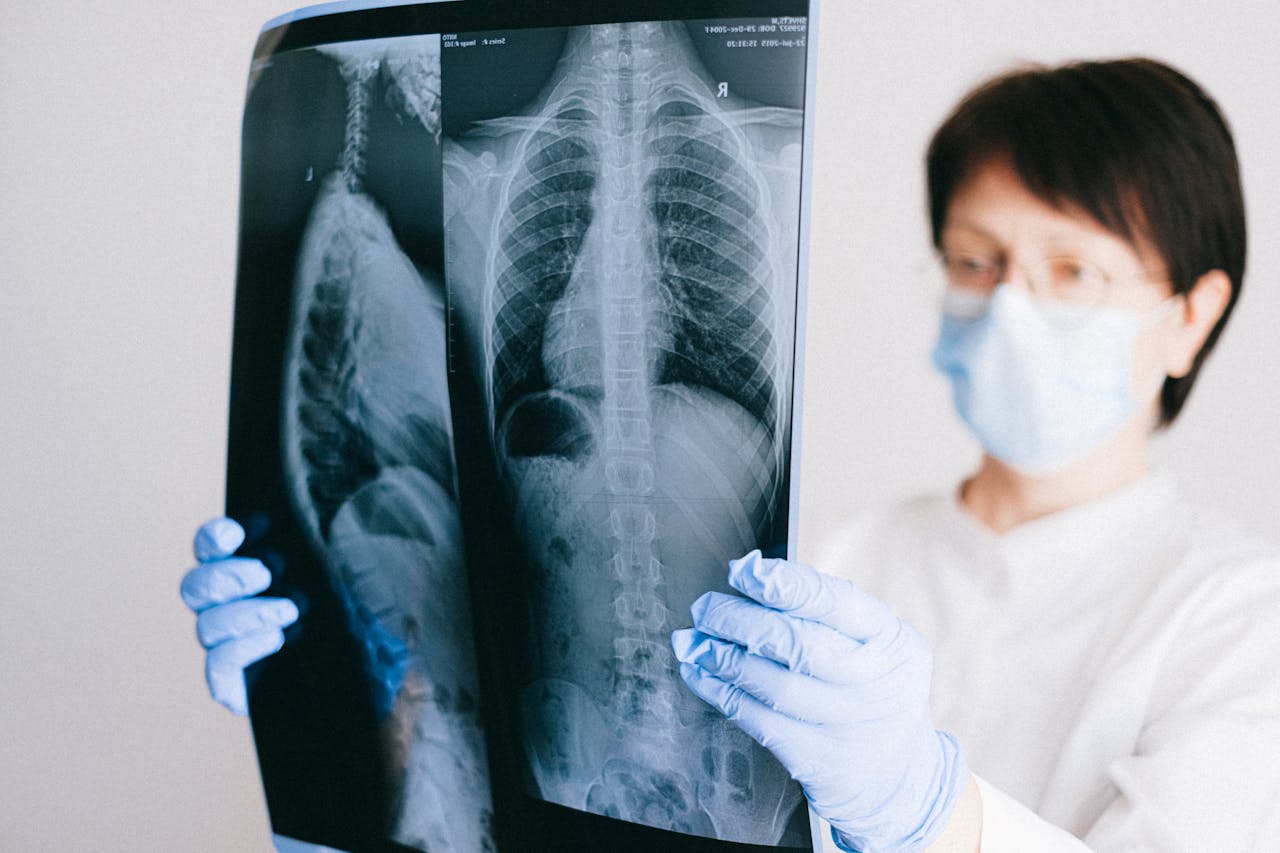What are the symptoms of bronchiectasis? What causes bronchiectasis? Bronchiectasis, characterized by many symptoms, is one of the lung diseases. Like other lung diseases, it can significantly affect a patient’s health. As it progresses, it reduces functionality and lowers the quality of life.
Many patients experience this condition, which makes breathing extremely difficult. Patients and their families often seek information about this illness, especially its symptoms and causes. Knowing these details allows patients to be more informed.
What Is Bronchiectasis?

Bronchiectasis can be briefly described as bronchial dilation. It occurs when damage to the airways within the lungs leads to a permanent widening of the bronchi. The loss of normal elasticity in these widened bronchi makes it challenging to expel accumulated substances. Over time, this condition can lead to infections in the lungs.
As an inflammatory disease, bronchiectasis causes mucus to build up in the airways, making it difficult to expel. This can result in permanent lung damage and inflammation. Immediate treatment is essential because if the infection progresses, severe complications may arise. The most prominent symptom of bronchiectasis is frequent and prolonged coughing fits.
What Is the Difference Between Bronchitis and Bronchiectasis?
Bronchiectasis involves the dilation of the airways (bronchi) due to damage caused by infections or other factors. While it is sometimes confused with bronchitis, bronchiectasis is a distinct condition. Unlike bronchitis, bronchiectasis involves the permanent widening of the airways.
Some research suggests that bronchiectasis is as common as other chronic lung diseases. Since bronchitis and bronchiectasis are different, the healthcare approaches for these conditions also differ.
What Causes Bronchiectasis?
Bronchial dilation typically results from infections in the lungs. When an infection enters the lungs, it causes the bronchi to widen and thicken, leading to significant discomfort and various symptoms. This condition can arise from numerous causes.
Sometimes, bronchiectasis develops as a result of inflammation caused by another illness. Other times, it occurs independently of any other disease. Bronchial damage often originates from infections contracted during childhood. The causes of bronchiectasis include:
- Immune system disorders
- Previous tuberculosis (TB)
- Congenital bronchial abnormalities
- Foreign objects in the airway
- Cystic fibrosis
- Some rare benign bronchial tumors
- HIV
- COPD
- Diabetes
- Crohn’s disease and ulcerative colitis
- Rheumatic or connective tissue diseases
What Are the Symptoms of Bronchiectasis?
Bronchiectasis symptoms can vary widely. This condition may develop as a result of another illness or independently. Inflammation in the bronchi due to various factors can lead to bronchial dilation, or bronchiectasis.
Characterized by coughing fits and frequent mucus production, bronchiectasis presents with multiple symptoms, including breathing difficulties. These symptoms can be severe and challenging for patients. The 14 symptoms of bronchiectasis include:
14 Symptoms of Bronchiectasis
 The symptoms of bronchial dilation or bronchiectasis are numerous and varied. The inflammation causing the dilation leads to a range of symptoms. Chronic and persistent coughing, a common symptom, can also appear in lung cancer. The symptoms of bronchiectasis are:
The symptoms of bronchial dilation or bronchiectasis are numerous and varied. The inflammation causing the dilation leads to a range of symptoms. Chronic and persistent coughing, a common symptom, can also appear in lung cancer. The symptoms of bronchiectasis are:
- Cough
- Frequent respiratory infections
- Excessive mucus production
- Shortness of breath
- Bad breath
- Fatigue
- Growth retardation in children
- Weight loss
- Clubbing of fingers
- Hemoptysis
- Pneumonia and fever
- Night sweats
- Chest pain
- Wheezing
How Is Bronchiectasis Treated?
How is bronchiectasis diagnosed? How is it treated? Once detected, bronchiectasis requires immediate treatment. Patients should be aware of the symptoms to recognize the disease and consult a doctor early.
Bronchiectasis symptoms should not be ignored. The treatment approach depends on the symptoms and underlying causes. A thorough patient history and detailed tests are necessary for proper diagnosis and treatment. Early treatment is crucial to prevent disease progression. The treatment methods include:
| Treatment Methods | Description |
|---|---|
| Postural Drainage | Patients are positioned to help expel mucus by coughing. |
| Bronchoscopy | A procedure using local anesthesia to diagnose and treat airway conditions. |
| Lung Transplant | Considered when both lungs are severely damaged. |
| Oxygen Therapy | Long-term oxygen therapy for hypoxia. |
| Respiratory Physiotherapy | Improves lung capacity and strengthens the lungs. |
| Surgery | Performed if other treatments fail. |
| Medications | Includes mucus-thinning agents and expectorants. |
How Can Patients Manage Bronchiectasis?
 Patients should adopt a healthy lifestyle and avoid harmful habits like smoking. Regular exercise, quality sleep, and a balanced diet are essential. Early treatment and proactive management of symptoms are critical.
Patients should adopt a healthy lifestyle and avoid harmful habits like smoking. Regular exercise, quality sleep, and a balanced diet are essential. Early treatment and proactive management of symptoms are critical.
Is Bronchiectasis Fatal?
Bronchiectasis is a chronic lung condition that requires lifelong management. Infections caused by this condition can damage the lungs, and if left untreated, it can become life-threatening. Early treatment is vital to prevent severe complications.
Frequently Asked Questions
There are other frequently asked questions about the symptoms and causes of bronchiectasis. Although the symptoms and causes of bronchiectasis provide a lot of information about bronchiectasis and raise awareness in patients, there are also other questions that are wondered.
1 – How Is Bronchiectasis Diagnosed?
Diagnosis involves a patient’s medical history, physical exams, blood and mucus tests, and high-resolution CT scans.
2 – Is Bronchiectasis Dangerous?
Yes, it can severely impact daily life and lead to serious complications if untreated.
3 – What Helps with Bronchiectasis?
Treatment may include medications, respiratory therapy, and in some cases, surgery.
4 – Can Bronchiectasis Be Seen on an X-ray?
While standard chest X-rays are used, high-resolution CT scans provide more accurate diagnosis.



